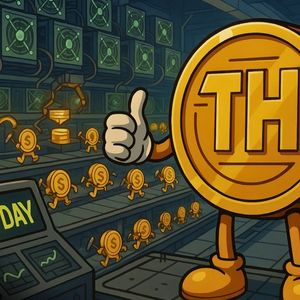As Miner Revenues Rebound to $50M+/Day, TeraHash Prepares to Unlock Mining Yields for Over 8 Million Users
4 min read
Bitcoin has officially broken through the $117,000 mark the other day – its strongest rally in months, reigniting interest not only in price speculation but in the infrastructure behind the scenes: mining. As the most popular cryptocurrency surges again, miners have stepped up operations, sending daily exchange inflows to nearly 50 BTC per day, a sharp rise from the 25 BTC daily observed earlier this quarter. While still below historical peaks of 100 BTC/day, this doubling in activity signals renewed confidence among miners – and capitalizing on this trend, investor appetite is following closely. According to recent data, cumulative miner earnings have climbed back to $51.6 million per day, up significantly from local lows and showing potential for further upside. Again, while not yet at the all-time highs of $80 million/day, the current numbers underscore a robust post-halving rebound, and an increasingly competitive market for Bitcoin yield. Amid this backdrop, TeraHash , the soon-to-launch protocol built by one of the industry’s largest mining players, is stepping into the spotlight. Designed to provide simplified access to Bitcoin mining-based rewards, TeraHash removes the need for hardware, hosting contracts, or complex infrastructure. Backed by 8 million early users from its viral Telegram-based mining game HashCats, the protocol is now positioning itself to become one of the largest tokenized mining network in crypto. It offers a hardware-free, on-chain alternative just as global interest in mining surges again. In recent days, that promise has quietly turned into conversation – with growing chatter across Telegram, X, and Discord fueling curiosity and pulling more eyes toward what might be one of the most unconventional protocol launches this cycle. The Low-Key Start to What Might Become the One of the Largest Bitcoin Mining Protocol Amid the flood of Telegram bots, stickers, and trading alpha groups, mini-apps took off in 2024. What started with simple “tap-to-earn” games, like Notcoin and Hamster Kombat, quickly evolved into a new kind of onboarding funnel. With nothing but a few taps, tens of millions of users were interacting with crypto mechanics, often without even realizing it. Some games were speculative, some were just memes, but one of them, HashCats , laid the groundwork for something bigger. This mining-themed simulation, launched in mid-2024, where users upgraded cartoonish rigs, optimized power usage, and managed reward cycles, all while competing for yield with digital cats. But beneath the memes and mechanics was something far more ambitious: a stealth onboarding funnel into one of the most capital-intensive sectors in crypto – Bitcoin mining. Within months, HashCats exploded to over 8 million users, making it one of the most viral mini-apps of the Telegram era. But unlike typical Web3 games, HashCats didn’t just build engagement — it seeded understanding. Players simulated halvings, optimized hashrate, and learned mining dynamics. Behind the scenes, a real mining infrastructure was being assembled. That infrastructure now has a name: TeraHash. The Logic Behind TeraHash’s Simpler Approach to Bitcoin Mining TeraHash offers a different path to mining : access rewards without ever owning a rig. At the heart of the protocol is $THS, a tokenized unit representing 1 terahash per second (TH/s) of live, protocol-operated hashrate. Instead of navigating hardware lead times or energy contracts, users simply acquire $THS and stake it on the platform to get rewards from mining. No machines. No hosting. No downtime. But TeraHash also introduces a second asset, $HASH, born from the HashCats ecosystem, designed to deepen network participation through governance and a clever rewards redistribution mechanism: when users forget to stake their $THS, idle rewards are distributed among those staking $HASH in solo staking format or dual staking together with $THS tokens. Infrastructure With Proof, Not Promises Unlike earlier attempts at tokenized mining, TeraHash commits to verifiability. The team has announced plans for quarterly audits, public dashboards, and proof-of-hashrate attestation, ensuring the number of circulating $THS tokens does not exceed the live hashrate under protocol control. This move aligns with growing scrutiny around transparency in Bitcoin mining, especially as large-scale operations increasingly intersect with ESG debates, sovereign policy shifts, and grid impact concerns. In a recent example, Texas mining hubs reported up to 20% of grid participation during peak hours, renewing calls for both regulatory oversight and more transparent accounting from mining protocols. TeraHash aims to stay ahead of this curve by embedding trust at the protocol level, where every token is verifiably backed, and every reward is traceable on-chain. Bitcoin Mining Could Significantly Evolve in the Months Ahead With its July launch fast approaching, TeraHash is positioning $THS as a new programmable utility token, akin to how ETH represents staking. The team has publicly committed to targeting $5 billion worth of tokenized mining power over the next three years, signaling ambitions not just to participate in the mining market, but to reshape how it’s accessed. Integration efforts are already underway, with discussions around DeFi collateralization, dual-staking models, and wallet-level mining exposure. In essence, TeraHash is launching a token and laying the groundwork for a programmable mining layer, one that could plug directly into the rest of crypto’s capital flows, at the same time. For the 8 million who started by clicking on cartoon cats, and for the many more watching Bitcoin miner revenues rise again, TeraHash represents something new: a way into mining that’s not gated by geography, capital, or kilowatt contracts – just code, tokens, and transparent infrastructure. Disclaimer: This article is provided for informational purposes only. It is not offered or intended to be used as legal, tax, investment, financial, or other advice.

Source: Crypto Daily



